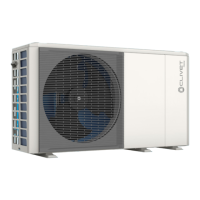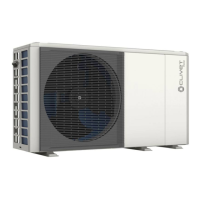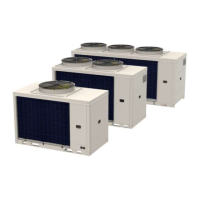32
Water connections
7.7 Piping insulation
Isolate the entire hydraulic circuit, including all components
to avoid:
• the formation of condensation during cooling
• the reduction of heating and cooling capacity
• the freezing of external water pipes in winter.
7.8
Hydraulic circuit antifreeze protection
Outdoor temperatures close to zero can cause the water in
the piping and in the unit to freeze.
Frost can lead to irreversible damage to the unit.
Damage from freezing is not covered by the warranty.
To avoid freezing problems:
• mix the water with glycol, or
• protect the piping with heating cables laid under the
insulation, or
• empty the system in the event of long downtime
If the unit is not started for a long time, make sure it
remains powered and on stand-by.
If the power supply has to be disconnected water in the
circuit must be drained so that the unit and piping are not
damaged by freezing.
Do not reconnect the unit if there is no water in the
circuit.
In the event of an electric leakage or power failure, the
freezing protection functions cannot be activated.
7.8.1 Antifreeze solutions
For the use of freezable solutions, follow the manufacturer's
instructions.
The use of unfreezable solutions causes an increase in
pressure drops and a reduction in performance.
For details, refer to the technical bulletin.
The type of glycol used must be inhibited (non-corrosive)
and compatible with the hydraulic circuit components.
Do not use dierent glycol mixtures (e.g. ethylene with
propylene).
Glycol is a toxic uid, should not be discharged freely it
must be collected and possibly reused.
7.9 Automatic frost protection valves
Automatic frost protection valves are used to drain water
from the circuit, preventing freezing.
Install the valves in all the lowest points of the system (refer
to the accessory’s instruction sheet).
If water with glycol is used in the system, do not install
frost protection valves because they could drain the
system.

